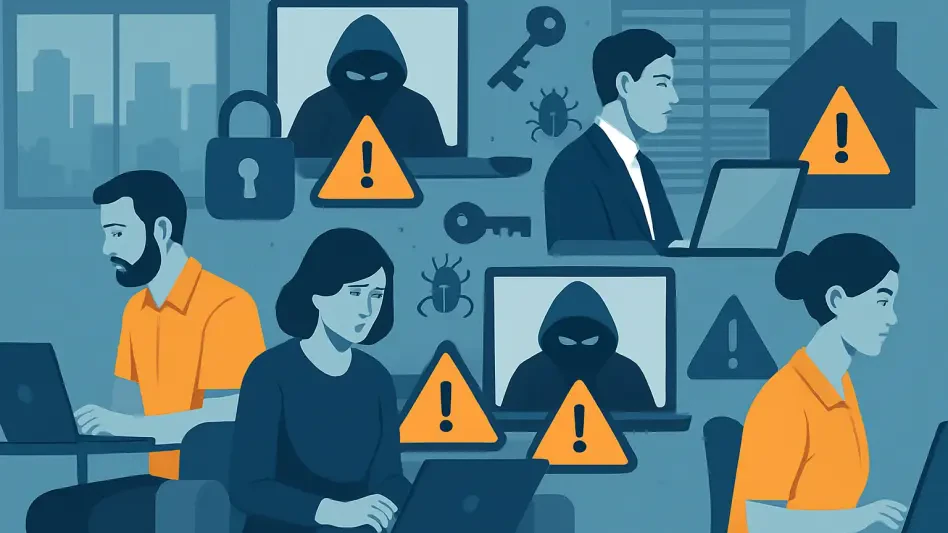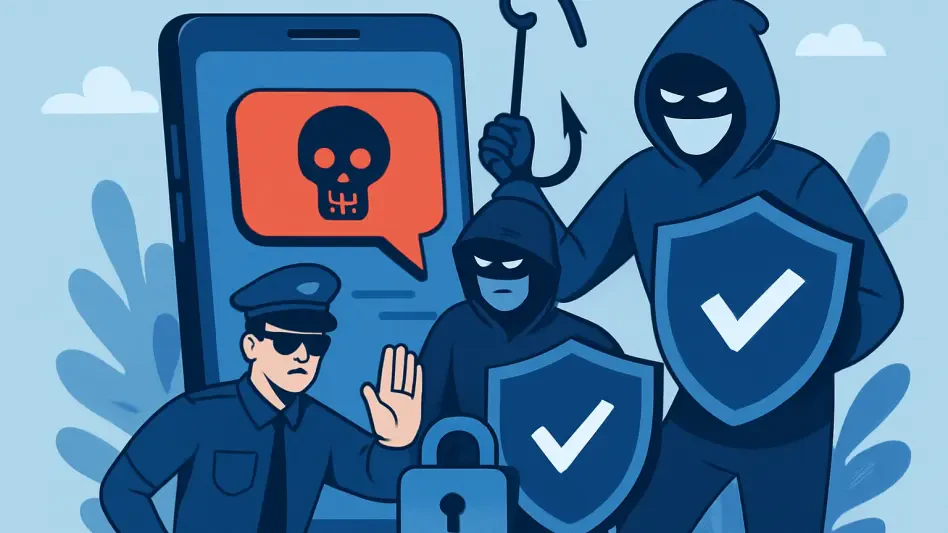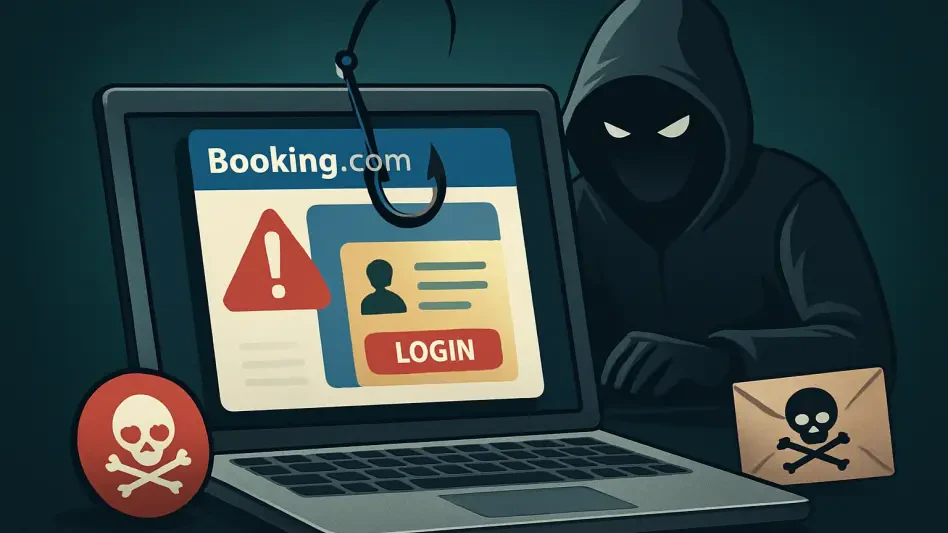In today’s evolving workplace, hybrid work models—where employees alternate between remote and office environments—have become a standard across countless industries, offering flexibility but also exposing businesses to a host of cybersecurity risks that are often underestimated. This shift, while empowering for employees, has created a complex landscape where vulnerabilities can lurk in unexpected corners, from unsecured home networks to inconsistent device management. The financial and operational fallout from poor cybersecurity isn’t just about high-profile data breaches; it includes a range of hidden costs that can silently undermine a company’s stability and growth. At the same time, the potential return on investment (ROI) from strategic cybersecurity measures is often overlooked, presenting an opportunity for forward-thinking leaders to turn a challenge into a competitive advantage. This exploration delves into the less obvious burdens of inadequate security in hybrid setups and highlights the substantial benefits of proactive investments, offering a clear-eyed view of what’s at stake.
Unseen Burdens of Inadequate Security
The financial toll of weak cybersecurity in hybrid work environments often starts with the most visible penalties, such as fines for failing to comply with strict regulations like GDPR in Europe or HIPAA in the United States, where violations can lead to multimillion-dollar consequences. Beyond these direct costs, businesses must contend with legal fees, incident response expenses, and the heavy burden of managing public relations crises to salvage their image after a breach. These expenses, while significant, are merely the surface of a deeper problem, as the true impact often unfolds over time in ways that are harder to measure. For many organizations, the immediate sting of a fine pales in comparison to the prolonged disruption that follows, affecting everything from daily operations to long-term strategic goals. As hybrid work blurs the lines between personal and professional tech use, the risk of non-compliance grows, making it essential for companies to grasp the full scope of these monetary repercussions before they spiral out of control.
Another critical yet often ignored cost is the dramatic loss of productivity that accompanies security incidents in hybrid settings, where dispersed teams are particularly vulnerable to disruptions. Ransomware attacks, for instance, can halt operations for weeks, with recovery periods stretching resources thin and derailing critical projects, while even smaller breaches force employees to spend hours or days rebuilding access to shared systems or finding temporary solutions. This downtime isn’t just a minor inconvenience; it translates into substantial revenue losses and missed opportunities, especially when remote workers lack immediate IT support. Furthermore, the inefficiencies compound when staff resort to unsecured communication tools due to blocked or slow systems, inadvertently heightening risks. In an era where speed and agility define business success, these interruptions can erode competitive edges, emphasizing the urgent need for robust defenses that keep workflows uninterrupted across diverse work environments.
Cultural and Trust Impacts
Poor cybersecurity doesn’t just drain financial resources; it also inflicts deep wounds on workplace culture, creating an atmosphere of frustration and distrust among employees navigating hybrid setups. When security protocols are overly restrictive or poorly implemented, they often lead to resentment, with staff feeling hindered by clunky logins or outdated tools that fail to meet their needs for efficiency. This dissatisfaction can foster a blame culture, where individuals avoid reporting potential issues out of fear of repercussions, allowing minor vulnerabilities to escalate into major crises. Over time, such an environment erodes morale, making it harder for teams to collaborate effectively across remote and in-office settings. The resulting tension not only hampers day-to-day operations but also signals to employees that their concerns and productivity are secondary, creating a vicious cycle of disengagement that no amount of policy can easily reverse.
Equally devastating is the damage to external trust and reputation when a cybersecurity failure occurs, an impact that can linger long after the incident is resolved. A single breach—whether a phishing scam or a data leak—can shatter the confidence of clients, partners, and vendors, who may question the reliability of a business that couldn’t protect sensitive information. In hybrid work models, where data flows across multiple platforms and locations, the risk of such incidents is amplified, making the stakes for safeguarding trust even higher. Rebuilding credibility after such a setback is a slow, costly process, often requiring extensive transparency efforts and reassurances that may not fully restore lost relationships. For companies aiming to maintain loyalty and attract new business, the intangible cost of a tarnished reputation can outweigh even the steepest fines, underscoring the importance of preemptive security measures to preserve stakeholder confidence.
Addressing the Shadow IT Challenge
One of the most persistent threats in hybrid work environments is shadow IT, the practice of employees using unapproved tools and applications to complete their tasks, often out of frustration with sanctioned systems. This isn’t merely a technical glitch but a cultural issue, driven by the need for speed and ease when approved software feels cumbersome or inaccessible across remote setups. While this behavior might seem like a harmless shortcut, it results in significant waste, as investments in licensed tools go unused, and introduces dangerous security gaps that can be exploited by malicious actors. The prevalence of shadow IT reflects a disconnect between employee needs and organizational policies, highlighting how hybrid work amplifies the challenge of maintaining control over tech ecosystems. Addressing this requires more than just stricter rules; it demands a deeper look into why workers feel compelled to bypass protocols in the first place.
Tackling shadow IT effectively calls for a shift in approach, focusing on cultural change rather than purely technological fixes, to align security with the realities of hybrid work. Companies must prioritize open communication, ensuring employees understand the risks of unapproved tools while actively seeking feedback on the usability of sanctioned systems. Simplifying access to approved platforms and providing training can reduce friction, making compliance feel less like a burden and more like a shared goal. Additionally, integrating user-friendly solutions that match the intuitive nature of popular unsanctioned apps can discourage detours into shadow IT. By fostering a culture where security and efficiency coexist, businesses can minimize wasted resources and vulnerabilities, turning a pervasive problem into an opportunity to build trust and accountability among distributed teams. This proactive stance not only mitigates risks but also enhances the overall adaptability of hybrid operations.
Unlocking Value Through Strategic Security Investments
On the flip side of cybersecurity challenges lies a compelling case for investment, where strategic measures can deliver measurable financial returns in hybrid work environments. Robust security solutions, such as Zero Trust Network Access (ZTNA) or unified endpoint management, significantly reduce downtime by enabling faster recovery from incidents, while also cutting costs tied to legal battles, compliance penalties, and inefficient shadow IT practices. These hard benefits are complemented by operational gains, as streamlined systems allow remote and on-site teams to work without constant interruptions from security hiccups. Real-world examples, like healthcare providers slashing legacy licensing expenses through modern security frameworks, demonstrate that such investments aren’t just protective but can directly boost the bottom line. In a landscape where every dollar counts, these tangible outcomes make a strong argument for prioritizing cybersecurity as a core business strategy.
Beyond the numbers, the softer benefits of effective cybersecurity add immense value, enhancing the fabric of hybrid workplaces in ways that are harder to quantify but equally vital. Improved security fosters a sense of safety among employees, reducing stress and dissatisfaction often caused by clunky protocols or frequent breaches, which in turn lowers turnover rates and the associated costs of replacing talent. Additionally, a strong security posture bolsters organizational reputation, signaling to clients and partners that data protection is a priority, thus strengthening trust in an era of heightened scrutiny. Government sectors, for instance, have seen dramatic improvements in network reliability and public confidence after adopting advanced security services, proving that the impact extends far beyond internal gains. These intangible returns—morale, credibility, and stability—position cybersecurity as a cornerstone of sustainable hybrid work, offering benefits that resonate across all levels of an organization.
Building a Resilient Future for Hybrid Work
Reflecting on the journey through cybersecurity challenges, it’s evident that past oversights in hybrid environments led to substantial financial losses, from crippling fines to productivity slumps, while also fraying cultural and reputational ties. The silent drain of shadow IT and the slow bleed of trust after breaches painted a stark picture of what was at stake when security lagged behind the rapid shift to flexible work models. Yet, those who acted decisively saw the tide turn, with tailored investments yielding not just protection but also efficiency and goodwill, as demonstrated by diverse industries that reaped both hard savings and softer wins.
Looking ahead, businesses must commit to aligning security strategies with the unique demands of hybrid setups, integrating advanced tools like ZTNA and fostering cultures that prioritize usability alongside safety. Regular training, open dialogue with employees, and continuous evaluation of tech ecosystems can transform vulnerabilities into strengths. By viewing cybersecurity as a driver of innovation rather than a cost, organizations can pave the way for a resilient future, ensuring that hybrid work remains a powerful asset rather than a persistent risk.








